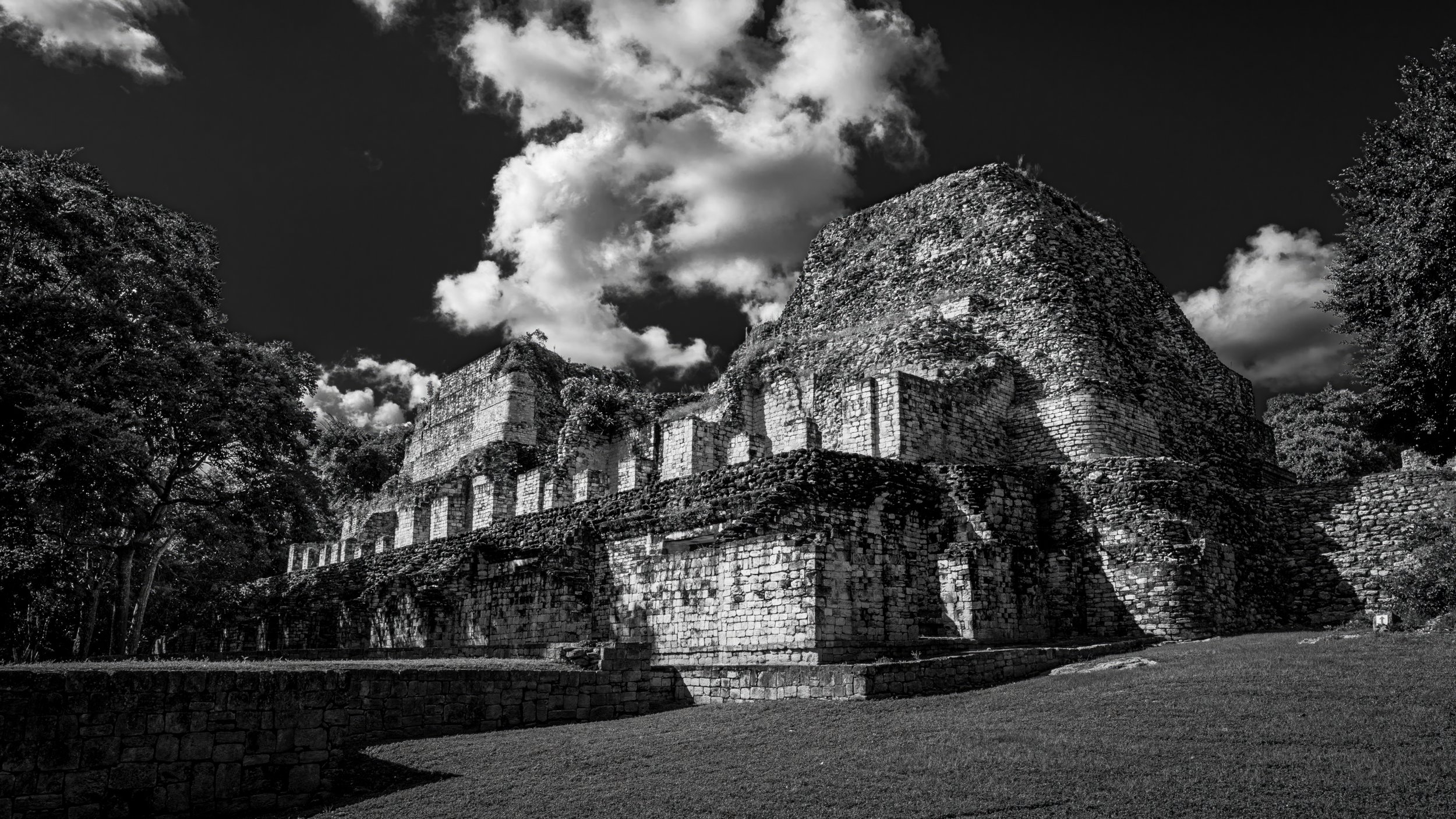
The Rio Bec
The Río Bec archaeological sites lie mostly in the state of Campeche and are easily reached from Mexico Federal Highway 186. This highway runs across the bottom of Quintana Roo and Campeche states, linking Chetumal with Escárcega and on into the interior of Mexico.
The eponymous Rio Bec archaeological site, south-east of modern day Xpujil, Campeche, has lent its name to a style of architecture that includes large structures with dual towers and smaller buildings with entrances that are designed to look like monstrous animal mouths.
Some Rio Bec sites also feature walls and moats, which suggests that they might have been fortified against attack from neighbouring cities.
The Rio Bec sites featured on this page include Xpuhil, Becan, Chicanna, Calakmul, and Balamku. I’ve also included images from the mostly unexcavated ruins at Dos Chichis, largely because of it’s relative proximity to the other sites. Ironically, I have not included images from Rio Bec itself. Consistency is not always my strong suit. Although, if I’m consistently inconsistent, does that make me consistent?
Becan, Structure 1.
Dos Chichis, twin pyramid mounds.
Dos Chichis, pyramid mound.
Becan, Structure II.
Becan, Structure X.
Becan, Structure X
Becan, Structure IV. Photo 1
Becan, Structure IV. Photo 2.
Becan, vaulted tunnel.
Xpujil, Structure I.
Xpujil, Structue I. Detail.
Balamku, preserved stucco frieze. Photo 1.
Balamku, preserved stucco frieze. Photo 2.
Chicanna, Structure XI
Chicanna, abandoned stone basin.
Chicana, Structure X.
Chicana, Structure XI platform.
Chicanna, Structure I
Chicanna, Structure XX.
Chicanna, stacked Chaak masks.
Calakmul, Structure IV. Photo 1.
Calakmul, Structure IV. Photo 2.
Calakmul, Structure 1.





















